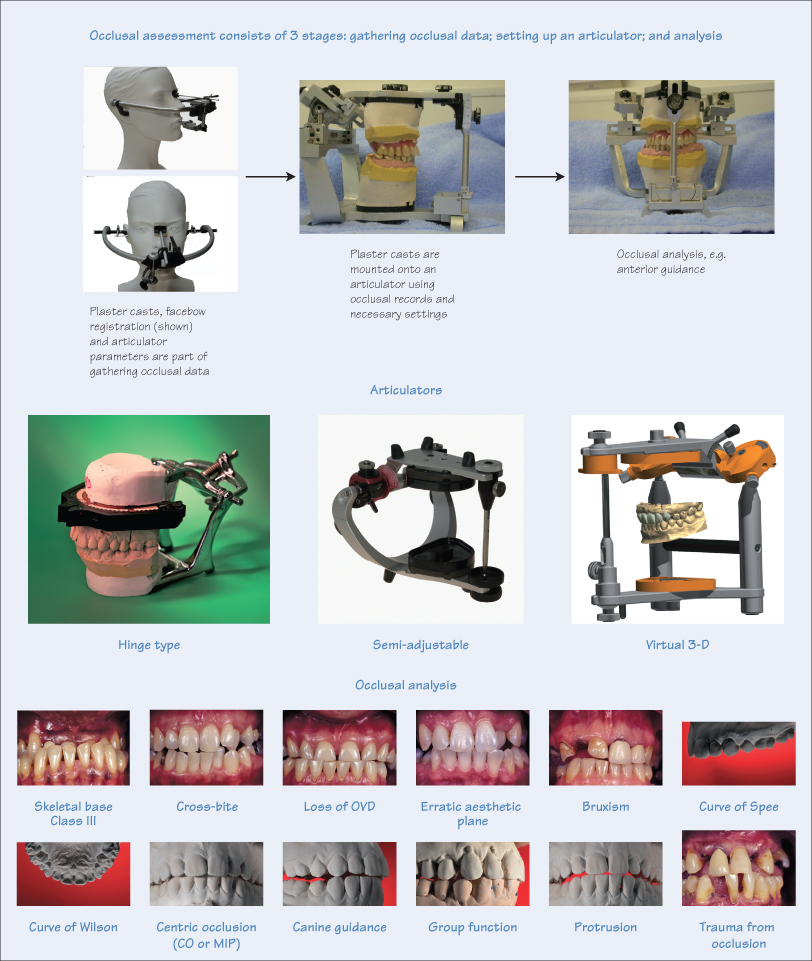10
Occlusal Analysis

Occlusal analysis assesses dysmorphology and dysocclusion and is a prerequisite before starting prosthodontic treatment, ensuring correct function and satisfactory occlusal schemes that are essential for aesthetics and long-term harmony of the stomatognathic system. This chapter is an introduction to occlusion, which is further elaborated in chapters 14 to 17. It should be remembered that there are numerous occlusal philosophies, with varying subjectivity and bias.
Occlusal Data Registration
To diagnose a patient’s occlusal status, and formulate a treatment plan, information needs to be transferred from the patient to an extra-oral simulating device, which can either be a mechanical or virtual articulator. Dental articulators are devices to visualise both static and dynamic occlusion. The data required depends on the chosen type of articulator and includes:
- Plaster casts – poured from accurate impressions of the maxillary and mandibular arches;
- Facebow transfer – locating the maxillary arch to the condylar hinge axis;
- Occlusal records – locating the mandibular cast to the maxillary cast. Check bite records, using wax or rigid addition silicone impression materials; may be required for centric occlusion (CO), centric relation (CR) and anterior and lateral excursions;
- Articulator parameters – Bennett and condylar angles, intercondylar distance and spacial relationships of craniomandibular geometry;
- Mandibular movements – instrumental measurements using pantographs, Gothic arch tracing or computer-assisted jaw-tracking systems;
- Articulator-related registration – rather than transferring data from the patient to an articulator, articulator registration works the opposite way. The articulator geometry is virtually transferred to the patient, using an electronic recording system, and the articulator adjusted accordingly.
Stay updated, free dental videos. Join our Telegram channel

VIDEdental - Online dental courses


